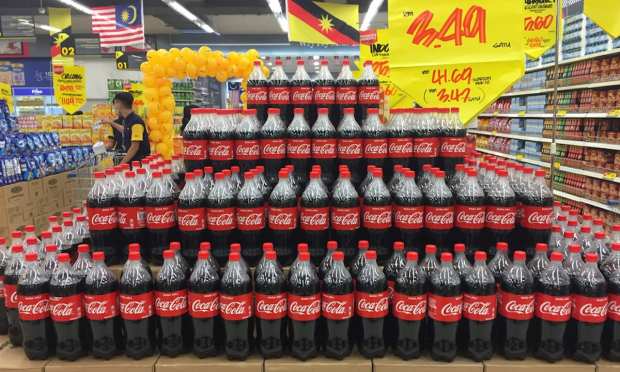Coca-Cola Looks To Past Crises To Predict 2021 Performance

In the final quarter of 2020, Coca-Cola’s revenue dropped 5 percent year-over-year to $8.6 billion, the company announced on Wednesday morning (February 10). For the full year, the company’s $33 billion revenue marked an 11 percent decrease from 2019. Given the close relationship between the progress of the pandemic and this downtick in sales, the company began modeling virus outcomes fairly early in the lockdown to make sales estimates.
Back in the second quarter of 2020, the company put together a team that did “a lot of very intense and interesting work,” CEO James Quincey said on a call with analysts, looking at “prior crises, whether military, economic or pandemic, going all the way back to our history for a hundred years.” Given the corporation’s global presence, the researchers looked at the different ways these crises played out to get a sense of how long it would take for each country to return to pre-pandemic levels of GDP. The team grouped countries based on how many years they estimated it would take: as few as one or as many as four.
By the end of 2020, Quincey noted, “we were able to see … [that] the progress of countries quite closely followed the scenarios in our model.” In light of these analyses, CFO John Murphy predicts, “we’re confident we will see recovery this year, and expect to deliver 2021 earnings that are at or above 2019 levels.”
Coca-Cola has simplified its portfolio by half, cutting down the number of master brands from 400 to 200, as Quincey explained on the call. The company did this by “allowing global category teams to identify the greatest opportunities and allocate investments accordingly.” The goal of this reduction is to “leverage our leader brands more effectively” and to “convert challenger and explorer brands into leaders more quickly and consistently.” Rather than keeping resources targeted to this narrower portfolio going forward, however, the company intends to build back up. Quincey explained that the reduction “will make room for more consumer-centric products down the road.”
Of course, some of the more recent SKUs get to stay. The company will expand its Topo Chico hard seltzer, which already launched in select cities worldwide, to more areas throughout the year. It will also invest in driving its redesigned Coke Zero, which has been performing much better than other Coca-Cola beverages, seeing 4 percent volume growth in 2020. The company will also refocus on Coke Energy, whose initial early 2020 launch was impeded by lockdowns.
During the quarter, the weakest performing beverages were tea and coffee, much like in Q3, with volume declining 15 percent year over year. The company attributes this hit in part to the closure of Costa coffee retail stores. The next weakest category was water, enhanced water and sports drinks, where volume shrank 9 percent. Juice, dairy and plant-based drinks performed a little better, seeing just a 2 percent decline.
Even in the highest performing category, sparkling soft drinks, sales were down 1 percent, which marked an improvement from their 4 percent full-year decline. However, soft drink sales were up in China, Brazil and Nigeria, and trademark Coca-Cola sales were up by 1 percent worldwide for the quarter. The company performed best in North America, where revenue was down 1 percent for the quarter, and worst in Latin America, where it was down 14 percent.
Quincey attributes the unevenness of sales across regions to COVID resurgences and lockdown measures, which will continue to affect performance in the coming months. “Thinking about 2021, there is no doubt the near-term trajectory of our recovery will still be impacted by the presence of the virus in most markets,” he said. “It’s clear that the pace and availability of vaccines will look different around the world, and therefore we’ll likely see some level of asynchronous recovery, depending both on vaccine distribution and other macroeconomic factors.”
